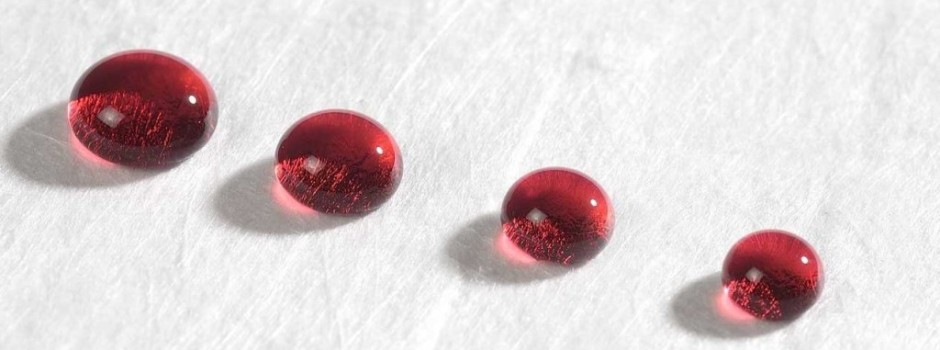
Plasma is considered to be the fourth state of matter; by adding energy, matter can be transformed from solid into liquid into gas into plasma. In low-pressure plasma technology, a stable and effective plasma is created by an electromagnetic discharge of a gas at low pressure and at low temperature. The molecules are decomposed into a mixture of neutral and charged particles that interact with the material’s surfaces—outer, inner and internal.
Low pressure plasma processes include cleaning (removal of molecular contamination layers from a surface), etching (removal of surface material—several nm up to 1 µm), activation (chemical modification of the surface) and coating (the polymerization of chemical species on the surface).
Electronics can be cleaned, activated, etched and coated. Activation of plastics improves their adhesion with paints and adhesives, even on complex 3D-parts. This offers an eco-friendly and cost-effective alternative to the use of primers. Textile materials can be activated and coated to add specific properties.
Greener performance
With low pressure plasma polymerization, a permanent polymer coating is deposited on the exposed surfaces of the product. The typical thickness of the coating is 50 – 500 nm, which is why they’re called “nanocoatings,” and invisible to the human eye. Depending on the chemicals used, different functionalities are obtained: hydrophilic, super-hydrophobic and super-oleophobic, for example.
Liquid-repellent plasma nanocoatings have existed for quite a few years. The latest improvements in process and machine design now allow the deposition of super-hydrophobic and super-oleophobic nanocoatings. These coatings have found a growing number of applications on new high-tech materials—nonwovens, wovens and knitted fabrics, micro-porous membranes and nanofibers—for filtration, work wear, sports and leisure.
Typically, the highest repellency is obtained with long perfluoroalkyl-chain molecules (C8). These chemistries contain PFOA and/or PFOS as by-products, which are under severe scrutiny due to environmental and health concerns. Europlasma has developed low-pressure plasma processes to deposit super-hydrophobic and super-oleophobic nanocoatings free of PFOA and PFOS, based on shorter perfluoroalkyl-chain chemistry (e.g. C6).
These coatings have improved quality and performance compared to traditional durable water-repellent (DWR) coatings in terms of water and oil repellency, as well as showing durability against washing, dry cleaning and abrasion. Europlasma also has halogen-free nanocoatings in development.
 Low-pressure plasma equipment
Low-pressure plasma equipment
Low pressure plasma equipment consists of a vacuum chamber, electrodes, a pump, a generator and chemical supplies. State-of-the-art equipment design makes it possible to deposit high-end liquid repellent nanocoatings on all materials. The size of the system is adaptable to the needs of the customer and to fit into mass production. The design of the equipment is critical to the treatment’s quality and uniformity; this used to be a big challenge for nanotechnology.
Europlasma pioneered a roll-to-roll system in 1994 and many systems have been put in the field since then. Europlasma put the first industrial roll-to-roll system for water- and oil-repellent nanocoatings in place in 1996 for 1.6-meter-wide rolls of filtration nonwoven, and this system is still running mass production today. In recent years the demand for roll-to-roll systems has increased dramatically, as nanocoating technology is spreading.
Finished textile end products can be coated after confectioning, which allows for coating seams, laces, fasteners, footwear and gloves, to provide optimal protection against liquids.
Applications and performance
Low-pressure plasma nanocoatings are used in a variety of applications in the textile market: sports and leisure textile garments, footwear and gear, work wear and accessories, and in filtration (diesel filters, HVAC applications, and so forth). They can also be applied on polyurethane or polyamide nanofiber membranes to replace more expensive GoreTex® membranes.
Since the coatings are so thin and flexible, they don’t influence the breathability of the fabric. Deposition of the coatings into the core of complex materials allows the coating of open cell foams, as used in shoes and swimwear, throughout their structure, leading to superior protection against water uptake, reduced weight increase over use and reduction in drying time.
 Environmental benefits
Environmental benefits
One of the key drivers of low-pressure plasma technology is the reduced environmental impact compared to wet chemical processing. Traditional DWR coatings are typically deposited via pad-dry-cure processes where the chemicals are applied as a dispersion, dried, and then cured at high temperature. Huge amounts of water, chemicals and energy are used.
Low-pressure plasma DWR coatings offer a more environmentally friendly alternative. A recent study shows a substantial reduction in the consumption of chemicals (up to 80 percent), energy (up to 50 percent) and CO2 emission (up to 50 percent), and no water consumption at all (100 percent reduction), compared to traditional wet chemical methods. (Low pressure plasma is thus a “dry” technology.) Consequently, there is no water effluent that needs recycling, which also results in substantial cost savings.
It is expected that environmental legislation will drive more producers from wet chemical processing to a dry and clean technology, such as plasma. Companies like Europlasma are making considerable progress in plasma deposition technology to cope with these production needs. With these advancements, the technology has proven to be cost effective and a fit for mass production.
Eva Rogge is R&D Manager for Europlasma NV.
 TEXTILES.ORG
TEXTILES.ORG


